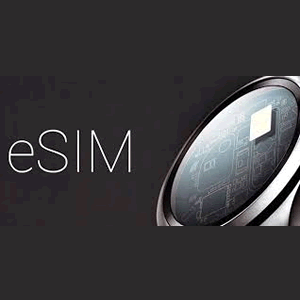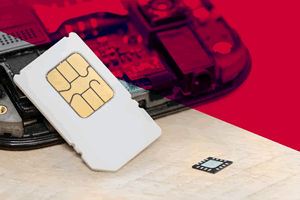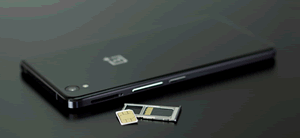The Implications of Adopting eSIM Technology
As the Internet of Things expands to link phones, appliances, security systems, and vehicles, manufacturers are looking to one SIM card that can talk to them all.
By David Luu, Marketing Manager, GCT Connectors
 Embedded subscriber identity modules (eSIMs) or embedded universal integrated circuit cards (eUICCs) are integrated SIM chips that cannot be removed from a device. Many machine-to-machine communication (M2M) devices and tablets, and now even some smartphones, are equipped with eSIM technology. Standardized by the GSM Association (GSMA) and backed by some of the world’s largest operators, as well as many device makers, eSIM technology is expected to play a key role in future Internet of Things (IoT) applications, gaining continued and significant traction.
Embedded subscriber identity modules (eSIMs) or embedded universal integrated circuit cards (eUICCs) are integrated SIM chips that cannot be removed from a device. Many machine-to-machine communication (M2M) devices and tablets, and now even some smartphones, are equipped with eSIM technology. Standardized by the GSM Association (GSMA) and backed by some of the world’s largest operators, as well as many device makers, eSIM technology is expected to play a key role in future Internet of Things (IoT) applications, gaining continued and significant traction.
Two recent examples of major manufacturers who have adopted the technology include Apple, with their Apple Watch Series 3, and Samsung, who used a GSM-enabled SIM in their Gear S2 Classic 3G watch. The Apple Watch Series 3 shares the same number as the user’s iPhone, so there will be a seamless experience across the two devices.
The Technology
eSIM-equipped devices don’t rely on a removable SIM card to access their mobile provider’s connection and billing information. Instead, each device contains a permanently installed embedded SIM chip. Upon entry of an activation code from the mobile service provider — for example, a QR code — the smart device downloads the provider’s subscription details into the eSIM. Although the delivery method, called remote SIM provisioning, is different, the data provided is the same as that held by a physical nano SIM.
This move from physical to digital technology has obvious advantages. eSIM information complies with a GSMA standard available to all operators, so users are free to change operators, plans, and even devices. Without needing a SIM card or carrier to hold them, eSIMs also offer space savings, which makes them particularly attractive for applications such as smart watches.
However, eSIM is a relatively new and still-expanding technology, so it carries some risks and requires more work to be done by the device manufacturers wishing to deploy it. In general, using an eSIM is more expensive than a traditional SIM. Andrew Stewart, GCT Connectors EMEA sales manager, said, “The eSIM itself has a price premium, plus the added cost of managing multiple network subscriptions remotely. There are potential issues with deployment, compatibility, connectivity, managing fleets of eSIMs and smart devices, and ensuring that all required networks support eSIMs.”
Customer Preferences and Concerns
There are other factors, including the customer perspective and expected industry trends, that prospective adopters should also consider. Customers are always looking for cost savings, which is a potential issue given the price implications aforementioned. However, they also appreciate space savings, as they realize this can lead to smaller and more compact products, which are always desirable. Equally, though, there are major concerns about security. The ability to program eSIMs remotely is widely seen as creating a new security risk that doesn’t exist with traditional SIM cards and connectors.
 In response to these concerns, many customers continue to regard nano SIMs as a good compromise, as they offer cost and space-saving advantages. Some users, especially in the developing world and emerging markets, simply like having the option to change out SIM cards. Another point for developing regions is that they may not have the wireless infrastructure and facilities needed to support and manage eSIMs.
In response to these concerns, many customers continue to regard nano SIMs as a good compromise, as they offer cost and space-saving advantages. Some users, especially in the developing world and emerging markets, simply like having the option to change out SIM cards. Another point for developing regions is that they may not have the wireless infrastructure and facilities needed to support and manage eSIMs.
The physical implementation of eSIMs also offers an advantage, albeit with an associated challenge. “Devices using eSIMs can be completely sealed to remove their susceptibility to dust, water ingress, or tampering,” said GCT’s Engineering Director, Steve Turner. “However, this sealing also makes repair more difficult if an eSIM malfunctions or fails.”
The Future
eSIMs have not made a significant impact on the market yet, but GCT expects it to happen soon, due to both the proliferation of M2M and IoT devices and GSMA’s development of consumer eSIM specifications. The distribution of eSIMs will likely outgrow that of traditional SIM cards over the next few years by a large margin. Starting from a 2017 base of $6.6 billion sales for SIMs, and $0.5 billion for eSIMs, they forecast that, if 2012–2017 growth rates continue, SIMs will still dominate the market with $8.6 billion of manufacturers’ sales in 2022, but eSIM sales will have grown to $5.4 billion, which would represent a 2012–2017 compound annual growth rate (CAGR) of 5% for SIMs and 95% for eSIMs.
 These predictions demonstrate that, despite the projected growth of eSIM market share, the demand for conventional SIM connectors will remain strong. The market for micro and nano SIM cards in particular will continue to expand in the face of slowing growth for standard SIM cards that are moving closer to legacy status.
These predictions demonstrate that, despite the projected growth of eSIM market share, the demand for conventional SIM connectors will remain strong. The market for micro and nano SIM cards in particular will continue to expand in the face of slowing growth for standard SIM cards that are moving closer to legacy status.
GCT’s SIM connector sales have continued to grow each consecutive year, up 38% from 2014 to 2016, with 2017 on track for an even greater increase. This growth is also backed up by innovations planned for GCT’s SIM connector range. For example, development is well underway for a push-pull nano SIM connector with a card detection switch and a push-push nano SIM tray-type connector, both of which are unique to the market and give customers even more choice and flexibility for their designs.
“We continue to develop our extensive range of SIM connector types, including low-profile options and more nano connector variants, to provide further space-saving opportunities,” said Laurence Hill, managing director at GCT. “We remain in an excellent position to offer customers technologies that lead prevailing market trends. In this instance, it is clear that conventional SIM connectors remain a price competitive, proven technology that works. They will have a place in the market for the foreseeable future.”
For more information about GCT’s SIM connectors, please visit www.gct.co/sim. To view its full range of connector products. including board-to-board, USB, and flat flex cable (FFC) connectors, please visit www.gct.co.
Recently posted:
[related_posts limit=”10″]






